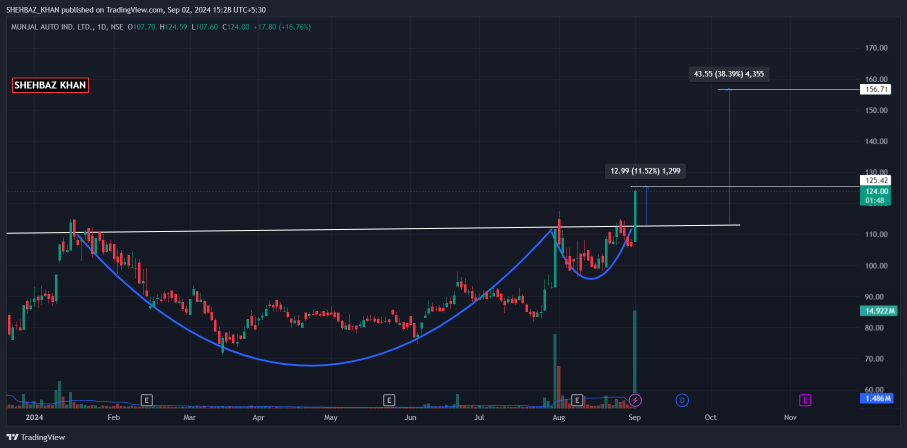There are no items in your cart
Add More
Add More
| Item Details | Price | ||
|---|---|---|---|

Introduction
Munjal Auto Industries Ltd. engages in the production of automobile components. It operates through the Auto Components and Composite Products and Moulds segments. It manufactures exhaust systems for two wheelers and four wheelers, spoke rims for two wheelers, steel wheel rims for two wheelers and four wheelers, fuel tanks for four wheelers, sheet metal components, seat frames for four wheelers, and other automotive assemblies.
Observation
Stock Forming a C&H pattern with huge volume breakout with RSI support also trading on all the EMA. July 24 it tries to breakout the level but can't make it.
10-day series (Day 10)
What is Calculating Risk Adjusted Returns? 🤔
Here is the advance answer with example 👇
Calculating Risk-Adjusted Return
Concept and Example
Risk-Adjusted Return is a measure that allows investors to compare the return of an investment relative to the risk taken to achieve that return. It provides a clearer picture of an investment's performance by considering the amount of risk involved.
One common method to calculate risk-adjusted return is Sharpe Ratio.
Sharpe Ratio Formula:
Sharpe Ratio=Standard Deviation of Portfolio’s Return (Portfolio Return - Risk-Free Rate)
- Portfolio Return: The return of your investment.
- Risk-Free Rate: The return of a risk-free asset (like government bonds).
- Standard Deviation: Measures the investment's volatility (risk).
Example:
- Portfolio Return: Assume your investment portfolio earned a return of 12% last year.
- Risk-Free Rate: The return on government bonds (risk-free rate) is 4%.
- Standard Deviation: The standard deviation of your portfolio’s return is 8%.
Using the Sharpe Ratio formula:
Sharpe Ratio=8%(12%−4%)=8%8%=1
Interpretation:
A Sharpe Ratio of 1 suggests that the portfolio's return is 1% higher than the risk-free rate for every 1% of risk taken (as measured by standard deviation).
- A higher Sharpe Ratio indicates a better risk-adjusted return. For example, a Sharpe Ratio of 2 would mean you're getting twice the return for the same level of risk.
- A lower Sharpe Ratio indicates a worse risk-adjusted return.
Example Insight:
If you compare two investments and one has a higher Sharpe Ratio, it means that investment is providing a better return for the same or lower risk compared to the other. This helps in choosing an investment that not only offers good returns but also considers the associated risks.
Let's touch fundamentals
Stock PE 23, ROE 12, ROCE 15, Debt .70, Promotor holding 74, Public holding 25
Technical Analysis & indicators 🔍
Daily Chart
C&H
News of the day

1. Larsen & Toubro has hived off its renewable EPC (engineering, procurement, and construction) business as a separate vertical from its Power Transmission and Distribution division, effective Sept. 1, according to a Monday filing to the stock exchanges. The renewable energy business, however, will remain within the company's Infrastructure Projects segment. The carving out of the clean energy business comes amid an increasing global transition towards clean energy and decarbonizing electricity.

2. Tata Steel absorption of steel products business The Indian Steel & Wire Products formally took effect Sunday, according to a Monday filing. As a result of the amalgamation, Indian Steel was dissolved without being wound up, the Indian steel-making group noted.

3. Adani Ports and Special Economic Zone booked a 5% year-on-year rise in cargo volumes handled in August to 36.1 million metric tons, according to an Indian bourse filing on Monday. The increase was led by containers, which were up 11% year on year, the filing said.
Educational content
Mon Sep 2, 2024